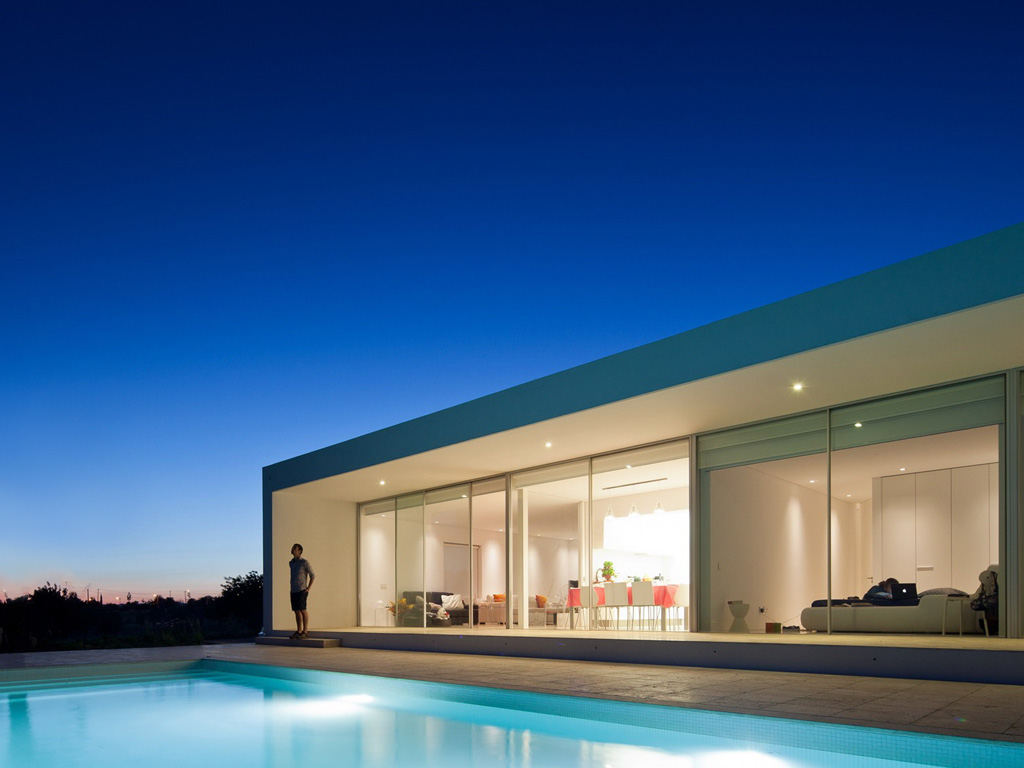

VALLECAS 47, 46 social housing for EMVS in Madrid.
In the design process of the work of architecture, architects, sometimes find ourselves with the problem of knowing clearly what we need but being ignorant of the way to materialize it.
The developer, in turn, relies on the expertise of the architect to invest in the best way the limited budget of a work.
The facade is given special care in architectural design, for being the only part of building perceived from the outside, it is often virtually the only available resource for revealing or characterize a construction.
Promoter expectations for a façade are ease of implementation during construction, representative value as the visible face of the building and quality guarantee, being sure that the envelope will respond to weather- protecting and sheltering inside where domestic life unfolds.
The architects also seek to respond by it to the wishes and intentions of the project.
The building is generated by alternating between "bedroom cores", ETICS coated of mass character, and “livingroom cores” of metal and glass.
For us it was very important to get a sharp contrast between the road and courtyard facades and perpendicular ones where access cores stay: illuminated planes, the first ones, in opposition to shaded ones, the latter.
In this way also lightening the presence of the building ensuring that is perceived as a composition of planes more than a volume.
Thus reinforcing one of the generating project ideas, the proposal of breaking apple block and thus reduce the perceived scale of the building and bring to the PAU (new urban development) the language of traditional city which neighbours the building.
Old City of Vallecas generated by organic growth with irregular streets and varied size of buildings that go back and forth from the street alignment. Without planning and yet full of life.
A continuous material allowed also to achieve the idea of a contemporary building; constructed with techniques adapted to their time, freed from the traditional division of base, main body and cornice.
The color possibilities of the material allowed us to seamlessly integrate the plaster along with the rest of the facade elements, aluminium frames in dark gray, zinc parapets covered and black lacquered steel staircase .
The material also allowed achieving a detail that combines aesthetics, perception and thermal efficiency, the “sheltered” hidden frame window. The façade envelope turns 90º to meet the aluminium frame of the window, aligned with the interior.
Thus from the inside the hollow looks bigger and, from the outside, the plane of glass disappears as SATE covers the frame of the window, so further reducing the thermal transmittance of the element.
Thus ETICS also allows us to enhance the contrast between the vain and massive facades of the bedrooms and the floor to ceiling glass of the living rooms.
The presence of various materials, brick and steel, on the base forced to resort to a solution that could absorb small differential movements that may occur.
The use of a monolayer or of many systems marketed ETICS was discarded as only Baumit gave an optimal technical solution.
ETIC System:
-Adhesive morter: Baumit SupraFix and Baumit SupraGrund (over iron structure)
-Insulation: Baumit ProTherm (white ending surfaces) and Mineral Therm (black ending surfaces) 6-8 cm.
-Reinforcement: Baumit StarContact
-Finish: Baumit GranoporTop k1,5 (White) and Baumit ArtlineTop Cool Pigments (Black)
